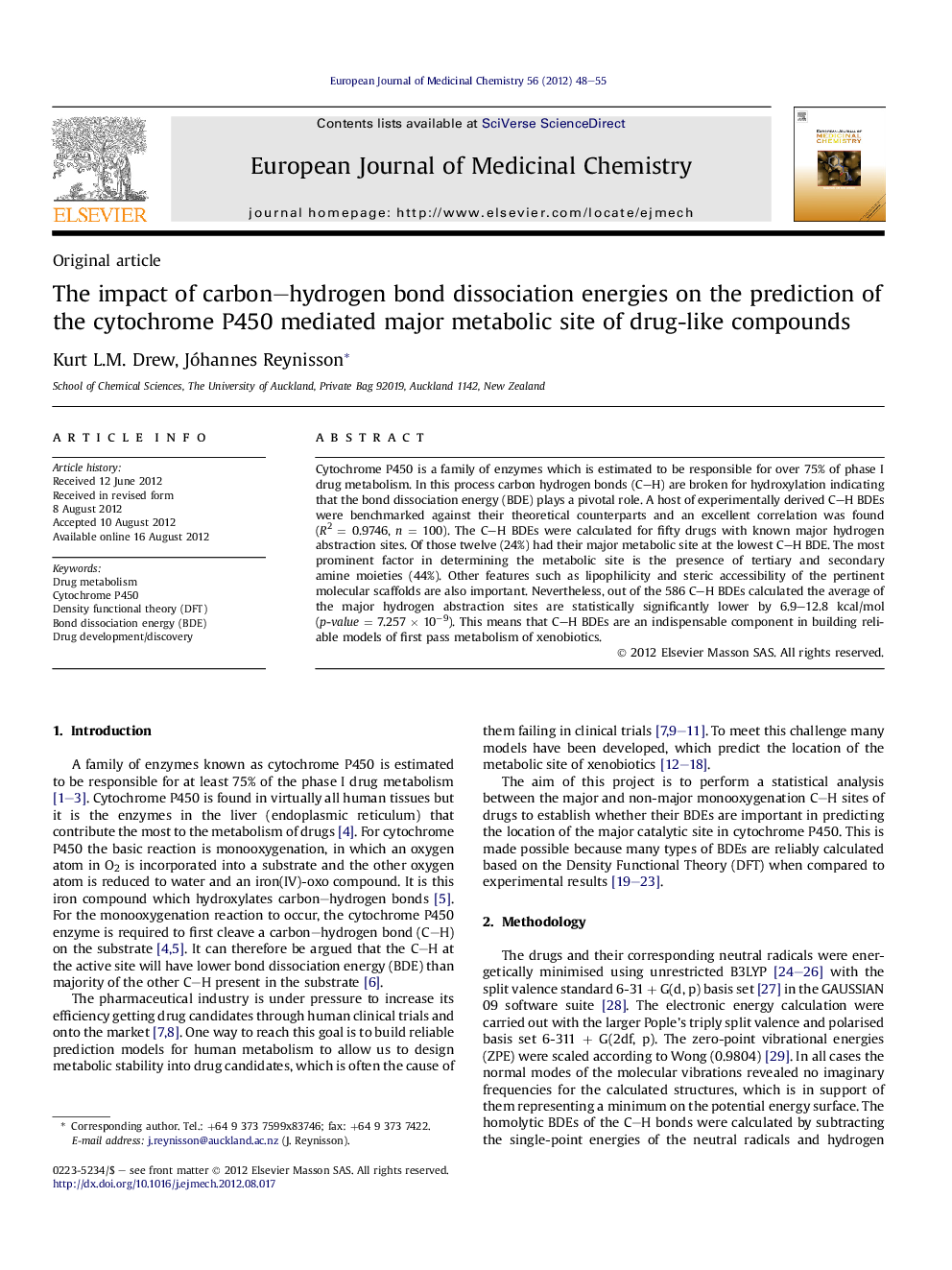| Article ID | Journal | Published Year | Pages | File Type |
|---|---|---|---|---|
| 1397400 | European Journal of Medicinal Chemistry | 2012 | 8 Pages |
Cytochrome P450 is a family of enzymes which is estimated to be responsible for over 75% of phase I drug metabolism. In this process carbon hydrogen bonds (C–H) are broken for hydroxylation indicating that the bond dissociation energy (BDE) plays a pivotal role. A host of experimentally derived C–H BDEs were benchmarked against their theoretical counterparts and an excellent correlation was found (R2 = 0.9746, n = 100). The C–H BDEs were calculated for fifty drugs with known major hydrogen abstraction sites. Of those twelve (24%) had their major metabolic site at the lowest C–H BDE. The most prominent factor in determining the metabolic site is the presence of tertiary and secondary amine moieties (44%). Other features such as lipophilicity and steric accessibility of the pertinent molecular scaffolds are also important. Nevertheless, out of the 586 C–H BDEs calculated the average of the major hydrogen abstraction sites are statistically significantly lower by 6.9–12.8 kcal/mol (p-value = 7.257 × 10−9). This means that C–H BDEs are an indispensable component in building reliable models of first pass metabolism of xenobiotics.
Graphical abstractFigure optionsDownload full-size imageDownload as PowerPoint slideHighlights► Cytochrome P450 metabolism induces C–H breakage in the substrate. ► The C–H bond disassociation energy (BDE) is reliably calculated when compared to experimental data (R2 = 0.9746, n = 100). ► 24% of the drugs investigated had the major metabolic site at the lowest BDE. ► Other features such as lipophilicity and steric accessibility of the substrates are also important.
